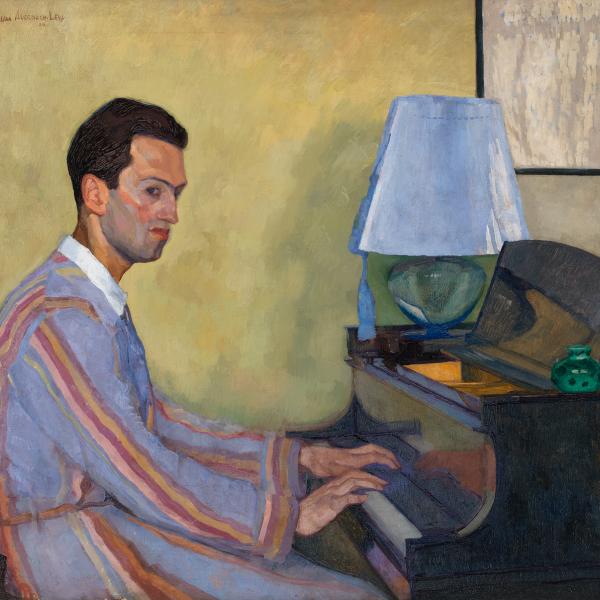Behind the Barrier: Deinstallations & Rotations
Wednesday, February 21, 2018 by
The Collections Department loves to take you behind the scenes. We’ve written before about the loans process at the Museum, shared our experiences serving as a guard at evening events, and dug into the nitty-gritty of packing objects for shipping and hanging hardware. Visitors can see an installed exhibition seven days a week here at the Museum. But what happens after an exhibition closes?
First, we prepare for closing the exhibition. Approximately one month prior to the closing date, the registrar in charge of the exhibition contacts lenders to ask when they can receive their loans back. She then contacts shippers to book dates for return.
Once the last visitors have seen the show and it closes (normally on a Sunday), we come in Monday morning with a crew of art handlers, people specially trained in the installation and deinstallation of art and historical artifacts. We do everything that we did to install the show but in reverse: labels are taken off the walls; plexiglass covers on cases are taken off, so we can have full access to the items inside; framed objects are unframed; and mannequins are undressed.
The only exception to this is if an object required an object courier. In that case, we will have to wait until a representative from the lending institution can come to oversee the deinstallation of that specific piece. We do all the same things we would for any object but with the additional oversight of the lender.
We do condition checks on all loaned property—noting the condition of the objects upon deinstallation, and comparing that to their condition at installation, so we can make sure they have not deteriorated over time. Since we monitor our climate and light levels so closely, we do not expect to see a change, but we always need to check.
Then the art handlers carefully pack items back into their original packing. We label and save all packing materials upon arrival, so we can re-use them at the end of the show. This is both best for the objects, as often the packing is custom made for the object, and environmentally sound. Within a few days, the items are sent back to the lender via a specialized fine arts shipper or sometimes by Museum collections staff depending on location and fragility.
We also do end-of-exhibition condition reports on all of our own property, just to make sure that everything has remained stable throughout the exhibition, and that it is ready to go back into storage with no conditions that might cause it to deteriorate there.
Some items are stored on-site at the Museum; it is fairly straightforward to look up their permanent locations in our database, replace them where they belong, and update our database to reflect that the items are back in their permanent locations. However, for items stored at an off-site storage facility, we have to arrange for a truck to take back all the returning material. Once off-site objects are returned to their home location we update our records to reflect the change. In all, it can take about a week (or even longer in the case of very large exhibitions or exhibitions with many different lenders) to return everything to its proper place, ready for the next researcher or exhibition.
A related process happens when we rotate objects in a long-term exhibition. For example, in New York at Its Core, slated to be on display for at least 10 years, or Beyond Suffrage: A Century of New York Women in Politics, which will be on view for 10 months, there are fragile items which can’t be on display for more than 3 months at a time. So, every 3 months, we schedule a rotation for those items, wherein we substitute other, similar items that support the same narrative as the ones we have to deinstall. The two Speakeasy cards shown here are from New York at Its Core: “Make the Sphinx Talk” is about to come off view, and “Prosit! Tracy’s” will be on display.


Each time we do a rotation, it is like doing a mini-deinstallation and installation at the same time. Depending on the amount of material that needs to rotate and the complexity of the display, rotations can take anywhere from a few hours to several days. If you visit the Museum on a day when a gallery is closed for rotations, we encourage you to come back again another time—see if you can spot the new material!


![A photo by an unknown photographer of [Gilda Radner in "Gilda Radner- Live From New York"] in 1979.](https://www.mcny.org/sites/default/files/styles/mcny_col_3_thumbnail/public/MN147951_0.jpg?itok=VSawv9V5)



